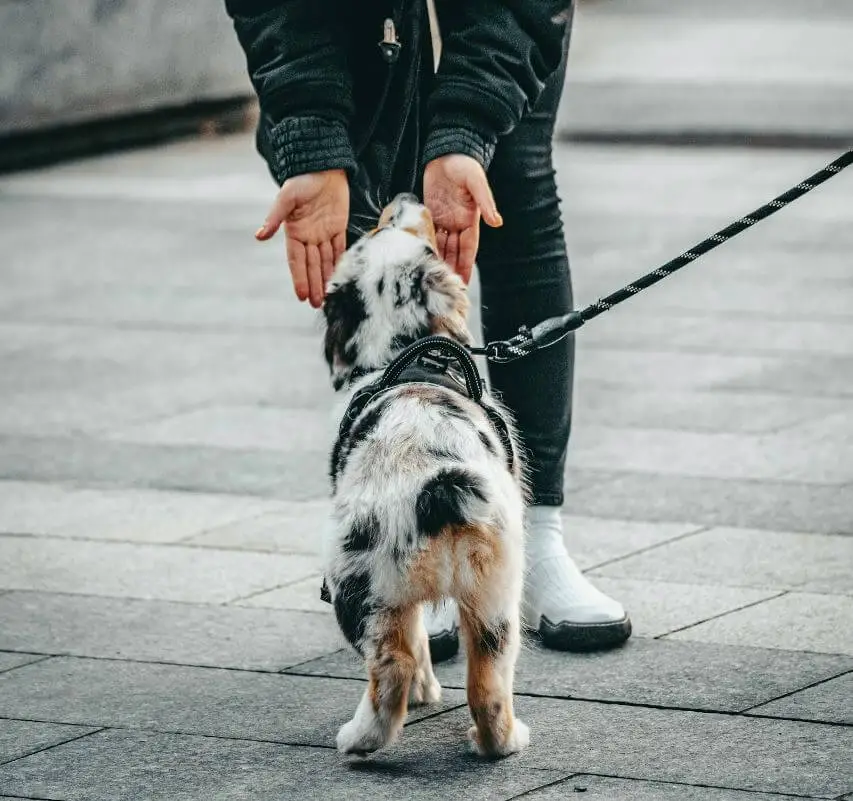When a dog circles a stranger, it can communicate a range of emotions and intentions. Deciphering these signals is crucial for ensuring positive interactions between humans and our furry friends. In this article, we’ll delve into the various meanings behind this behavior and offer tips on how to respond appropriately.

Positive Interpretations:
- Playful Greeting: One possible reason a dog might circle a stranger is to initiate play. A dog exhibiting a wagging tail, loose body posture, and playful growls may be inviting the individual to engage in a friendly game.
- Cautious Greeting: On the other hand, circling accompanied by moderate tail wags and sniffing indicates a more cautious approach. In this scenario, the dog is likely curious but unsure about the new person, using circling as a means to assess the situation.
Negative Interpretations:
- Apprehension or Anxiety: Circling with a tucked tail, flattened ears, and whale eyes suggests the dog feels apprehensive or anxious about the stranger. This behavior allows the dog to keep the person in sight while maintaining a safe distance.
- Territorial Behavior: If the dog growls, barks, or displays stiff posture while circling, it may be exhibiting territorial behavior. In this case, the dog is signaling a warning to the stranger, asserting their perceived territory.
Importance of Context:
- Body Language: It’s essential to consider the dog’s overall body language alongside the circling behavior. A wagging tail and relaxed posture indicate a more positive intention, whereas flattened ears and growling suggest potential aggression.
- Past Experiences: A dog’s past experiences with strangers can significantly influence their behavior. If a dog has encountered negative situations in the past, they may be more likely to circle out of fear or anxiety.
Tips for Encountering a Circling Dog:
- Avoid Eye Contact: Direct eye contact can be interpreted as a threat by some dogs. Maintain a calm demeanor and refrain from making sudden movements that could escalate the situation.
- Let the Dog Initiate Contact: Allow the dog to approach you at their own pace, if they choose to do so. Avoid reaching out to pet them unless they clearly indicate a desire for interaction.
- Give the Dog Space: If the dog appears anxious or displays signs of aggression, slowly back away to give them space. Increasing the distance between yourself and the dog can help de-escalate the situation.
- Seek Help: If you feel unsafe or the dog’s behavior becomes aggressive, seek assistance from the dog’s owner or a responsible adult who can intervene safely.
Understanding why dogs circle strangers is crucial for fostering positive interactions between humans and dogs. By interpreting their behavior and responding appropriately, we can create safer and more enjoyable encounters for both parties. Remember to respect the dog’s signals and always prioritize safety when interacting with unfamiliar dogs.
